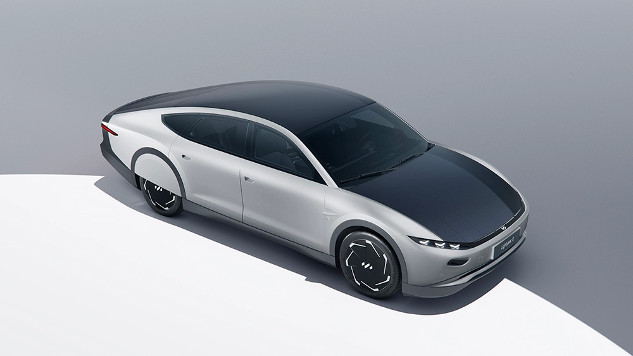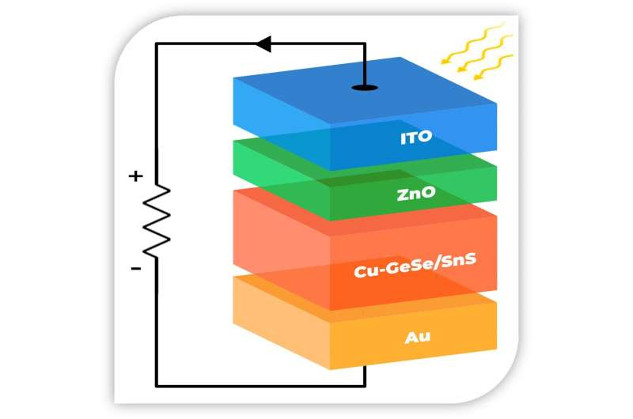
After six years of development, the Dutch tech startup's solar-powered EV, named 'the 0,' is ready to make its debut. This innovative vehicle boasts the ability to go months without needing a recharge, setting a new standard for efficiency in electric transportation.
Researchers from Lehigh University have developed a new quantum material that could significantly revolutionize the efficiency of solar panels. This innovative material, combining copper, germanium selenide (GeSe), and tin sulfide (SnS), has demonstrated an external quantum efficiency (EQE) of up to 190%. This number surpasses the conventional efficiency limits, suggesting a breakthrough that could transform solar energy harvesting.
Understanding the Efficiency Breakthrough
Solar cells convert sunlight into electricity, and their effectiveness is gauged by the EQE, which traditionally maxes out at 100%. This 100% efficiency means each photon of light generates one electron of electricity. However, the new material developed at Lehigh uses a mechanism known as multiple exciton generation (MEG), where high-energy photons can produce more than one electron, thus pushing the efficiency beyond the 100% barrier.
What sets this material apart is its use of "intermediate band states" – specific energy levels within the material that enhance its ability to convert solar energy. These energy levels are ideally situated to exploit photons that conventional solar cells would waste. The material taps into a broader range of the solar spectrum by absorbing additional light in the infrared and visible spectrums, thereby boosting electricity generation.
The Science Behind the Innovation

Schematic of the thin-film solar cell with CuxGeSe/SnS as the active layer. Credit: Ekuma Lab / Lehigh University
The material's impressive performance is rooted in the precise structural manipulation at the molecular level. By inserting copper atoms into layers of GeSe and SnS, the researchers have created a tightly bound, two-dimensional structure that enables unique photon interactions with the material. These interactions occur within van der Waals gaps—tiny spaces between the layers of the material where the copper atoms reside.
Through extensive computer simulations and experimental methods, the team has honed a technique that allows for the exact placement of copper atoms, minimizing unwanted effects like clustering, which could compromise the material's performance.
Looking Ahead: Challenges and Opportunities
The development of a new quantum material with up to 190% quantum efficiency by researchers at Lehigh University could significantly advance solar-powered transportation, including cars, trucks, and buses.
This breakthrough material, capable of efficiently capturing a broad spectrum of sunlight, addresses the current limitations of solar-powered vehicles by providing sufficient energy for heavier and long-distance travel without reliance on fossil fuels.
Integrating these high-efficiency solar cells into vehicle designs offers the possibility of reducing carbon emissions dramatically, particularly in heavy-use vehicles like buses and trucks, where fuel costs and environmental impact are significant concerns.
As these advanced solar cells are further developed for practical use, they could transform economic and environmental dynamics globally. Reducing operational vehicle costs and carbon emissions could lead to substantial financial savings and improved public health through cleaner air.
Moreover, shifting towards solar-powered vehicles would decrease global dependence on oil, enhance geopolitical stability, and promote job creation in renewable energy sectors. This shift represents a crucial step towards sustainable global transportation, aligning with broader environmental goals and paving the way for a cleaner, more sustainable future.
While the results are promising, a path is ahead before commercializing this material. Integrating this new quantum material into existing solar energy systems requires further research and development. Although advanced, the production process needs to be scaled up for practical application in the solar power industry.
The potential benefits of this technology are vast. By significantly increasing the efficiency of solar cells, we can make strides toward more sustainable energy solutions, reducing our reliance on fossil fuels and decreasing the environmental impact of energy production.
The work of Professor Chinedu Ekuma and his team at Lehigh University represents a significant leap forward in the field of photovoltaics. Their development challenges existing limits and opens up new avenues for the future of renewable energy. As this technology progresses, it could lead to more affordable and efficient solar power systems, making solar energy more accessible worldwide and helping to sustain global energy needs.
About the Author
 Robert Jennings is co-publisher of InnerSelf.com with his wife Marie T Russell. He attended the University of Florida, Southern Technical Institute, and the University of Central Florida with studies in real estate, urban development, finance, architectural engineering, and elementary education. He was a member of the US Marine Corps and The US Army having commanded a field artillery battery in Germany. He worked in real estate finance, construction and development for 25 years before starting InnerSelf.com in 1996.
Robert Jennings is co-publisher of InnerSelf.com with his wife Marie T Russell. He attended the University of Florida, Southern Technical Institute, and the University of Central Florida with studies in real estate, urban development, finance, architectural engineering, and elementary education. He was a member of the US Marine Corps and The US Army having commanded a field artillery battery in Germany. He worked in real estate finance, construction and development for 25 years before starting InnerSelf.com in 1996.
InnerSelf is dedicated to sharing information that allows people to make educated and insightful choices in their personal life, for the good of the commons, and for the well-being of the planet. InnerSelf Magazine is in its 30+year of publication in either print (1984-1995) or online as InnerSelf.com. Please support our work.
Creative Commons 4.0
This article is licensed under a Creative Commons Attribution-Share Alike 4.0 License. Attribute the author Robert Jennings, InnerSelf.com. Link back to the article This article originally appeared on InnerSelf.com



























